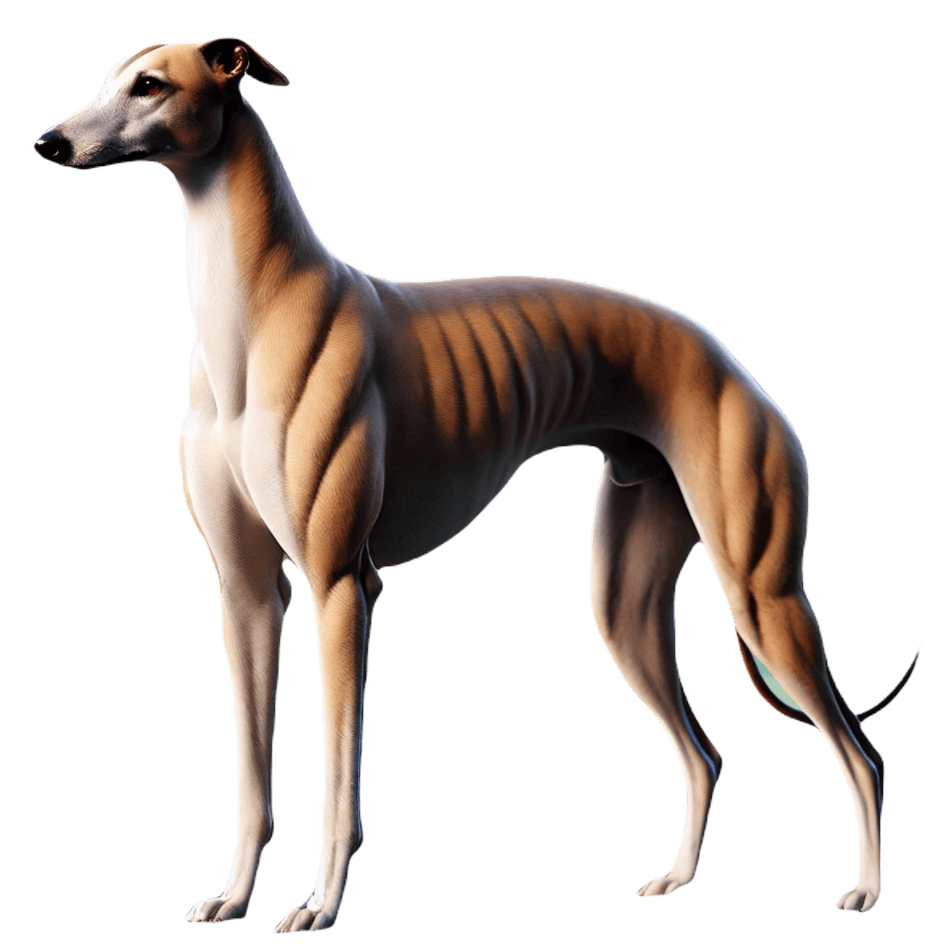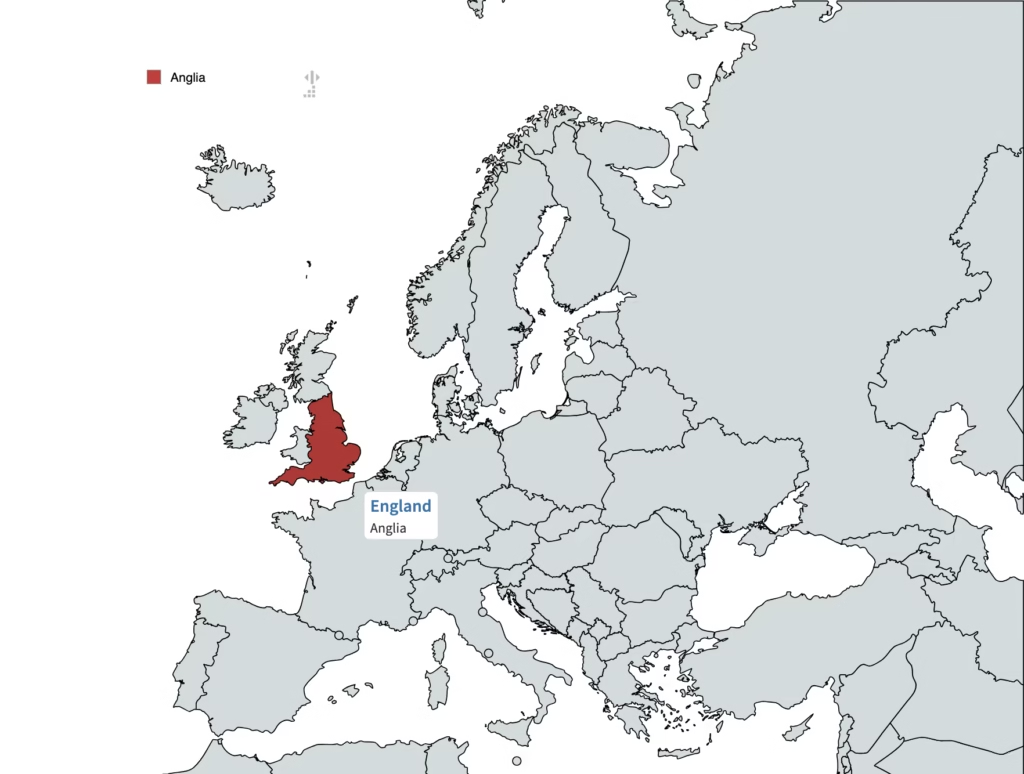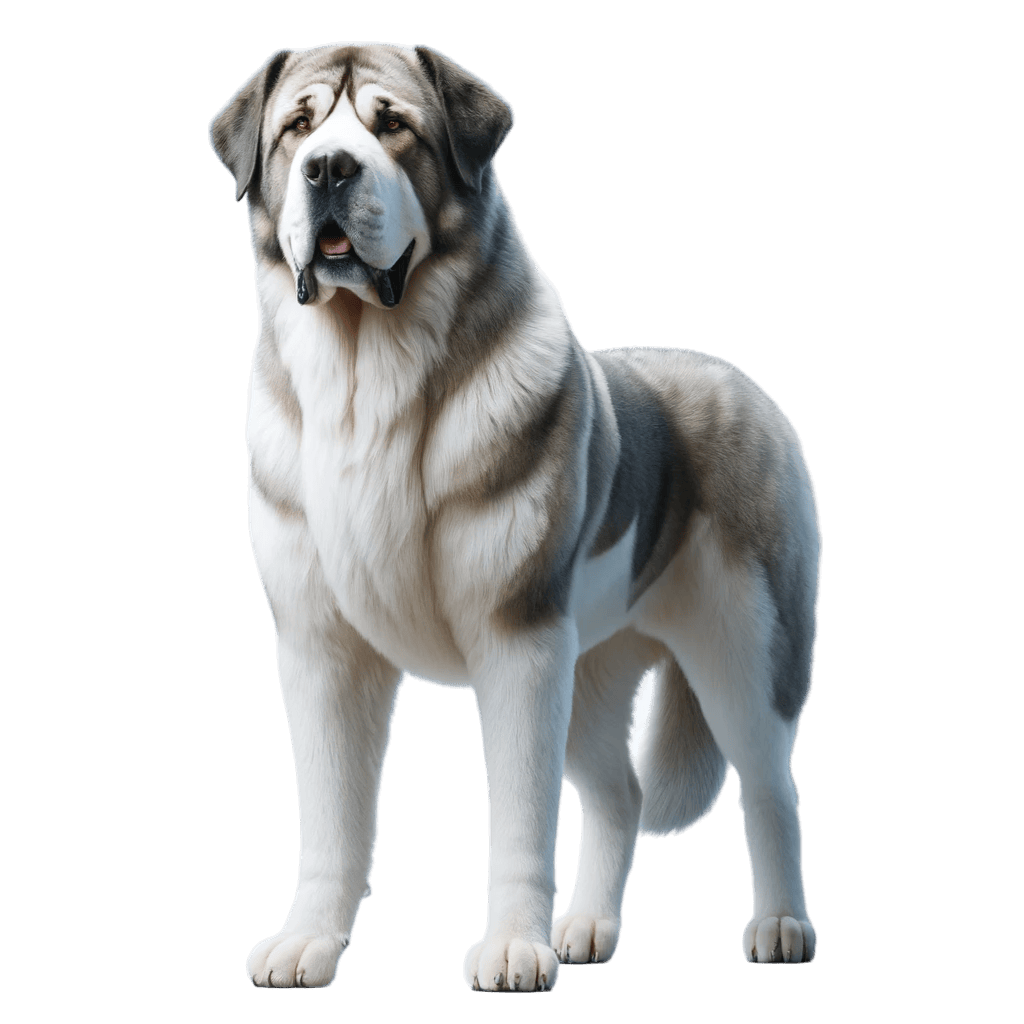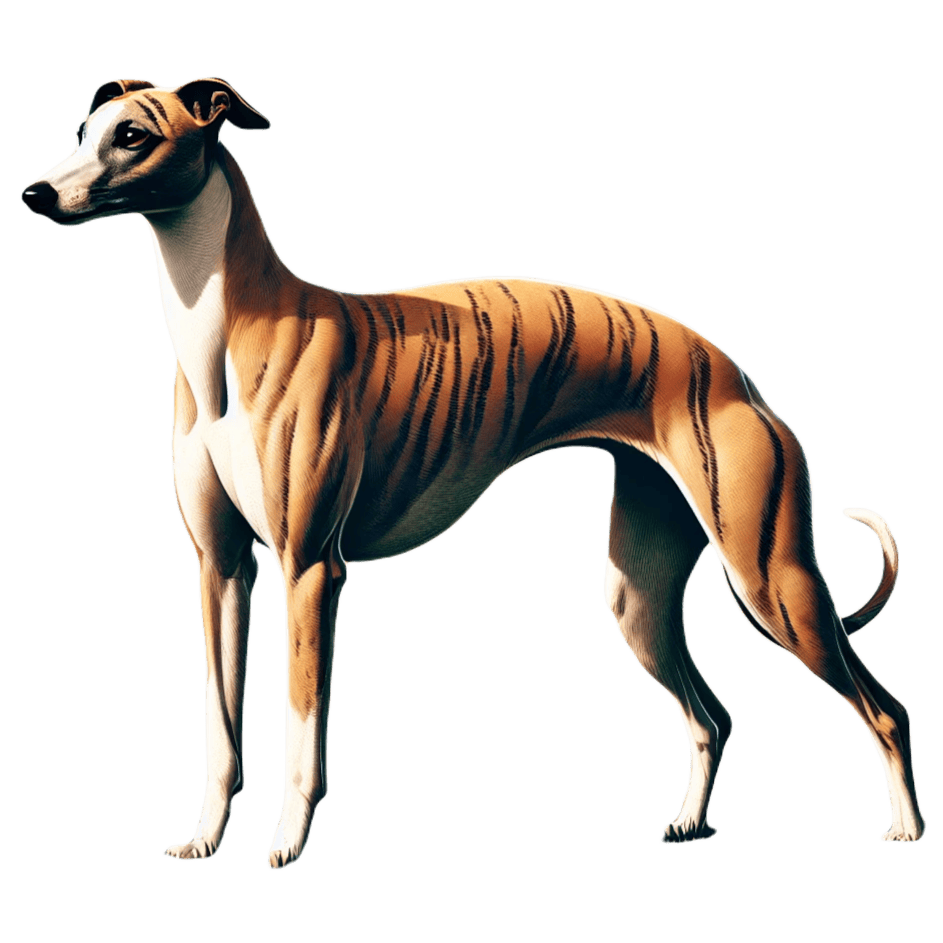ENGLISH GREYHOUND
A brief overview
The Greyhound is an elegant and fast dog with a slender body, pronounced muscles and long limbs, reaching impressive speeds of up to 72 km/h. It is characterized by a gentle and calm temperament, and is perfect both as an energetic partner for outdoor activities and a quiet companion at home. Greyhounds are attached to their family and tend to form strong emotional bonds with their caregivers.

Table of contents
Country of origin
Officially, according to the FCI standard, the English Greyhound is considered a breed that originated in Great Britain. More precisely, the breed was first described and classified in England, where it was fully developed and standardized, with its roots going back to ancient Egypt, Greece and Rome, where it was present.

BREED CHARACTERISTICS
Weight
27 – 40 kg.
Height
Dog 71 – 76 cm, bitch 68 – 71 cm.
Type of hair
Short, smooth coat. Coat color black, white, red, blue, blue, fawn, light fawn, brindle or any of these colors with white markings, patched.
Life expectancy
10 – 14 years.
Health
The breed is considered relatively healthy.
Character
Gentle, balanced, with a strong hunting instinct.
Need for exercise
A great need for intense but short-term movement in the form of free running.
FCI classification
Group 10 (sighthounds), section 3 (short-haired sighthounds).
Price
2,000 – 3,500 PLN (ZKwP).
History and origins
It is believed that the greyhound may have originated in the Middle East. Drawings of greyhound-like dogs can be seen on the walls of Egyptian tombs from the fourth millennium BC. Over time, these dogs spread throughout Europe, and acquired their current form in Britain. Today’s greyhounds are derived from dogs used to hunt hares. In Poland, the first greyhounds appeared in the early 20th century.
Appearance and physique
The English greyhound is a tall, slender dog with an elegant body and pronounced muscles. It is characterized by a long, slender neck, deep chest and long, strong limbs. It has a head of characteristic shape, elongated, with long ears set to the side. Its coat is short, smooth and usually comes in a variety of colors and patterns, from solid to brindle. Possible coat colors include black, white, red, blue, blue, fawn, light fawn, brindle or any of these colors with white markings, patched. The Greyhound exudes dignity and strength, making it both a beautiful and impressive dog.
Temperament and behavior
The Greyhound is a dog with a gentle and calm temperament, making it an excellent family companion. He can also be extremely sensitive and gentle. It is a breed that requires a lot of exercise, but can often be calm and quiet at home. Greyhounds are generally friendly toward people and other animals, but early and careful socialization is important, due to their strong hunting instinct.

Training and activity
Greyhounds are usually cooperative with humans, but due to their sensitivity, gentleness is needed in training. Despite their calm temperament, greyhounds are active dogs that need regular physical activity, such as running and playing in a large but safe (preferably fenced) area. A great activity for greyhounds is track racing or coursing, during which they can satisfy their chase instincts. With proper training and regular activity, greyhounds can become wonderful companions, combining elegance with energy.
Health and life expectancy
The greyhound is a healthy dog breed with a life expectancy of 10 to 14 years. However, like many large breeds, greyhounds can be prone to certain health problems. Some of the potential conditions they may face include heart disease, thyroid problems, hip and elbow dysplasia, or eye problems such as cataracts and psoriasis. As representatives of a large breed, they are also prone to gastric dilatation and torsion. It is important to regularly monitor the greyhound’s health and visit the veterinarian regularly for early detection and treatment of any problems. In addition to veterinary care, proper nutrition, regular exercise, and providing the right living conditions for the dog and ensuring its well-being play a key role. Taking care of a greyhound’s health can help prolong its life and ensure the best possible quality of life.

Care and custody
Greyhound grooming and care are relatively simple, but do require regular involvement, in the form of brushing, eye and ear hygiene and claw trimming. It should also be borne in mind that these dogs, due to their short coat and slim body structure, may require clothing in the winter and, in some cases, special shoes.
Diet and nutrition
Greyhounds usually do not require a special diet, but as with any other breed, it is important to feed regularly at consistent times, ensure access to fresh drinking water, and avoid excessive snacking and remember to control the number of calories consumed by the dog. However, sporting dogs, such as those involved in racing, may require special attention in terms of diet and nutrition and consultation with a specialist dealing with these issues.
Maintenance costs
The cost of maintaining a greyhound is moderate, but may increase if you plan to participate in races or coursing for your dog, which are held only in some cities in Poland.

Buying or adoption
Buying a greyhound puppy in Poland is not easy, as there are few breeding kennels for this breed and litters appear only sporadically. It is not a very popular breed in our country. An alternative to a puppy from a kennel is to adopt a greyhound from one of the foundations specializing in it, or a greyhound that has finished its racing career in England, for example. These dogs are looking for their homes all over the world.
Own breeding
Breeding greyhounds can be quite a challenge in our country. Due to the low popularity of this breed in Poland, finding suitable parents for our potential litter may involve long trips, including out of the country.
Did you know?
Summary
Through the eyes of a behaviorist
Greyhounds are fascinating dogs that combine unique behavioral and physical characteristics. Despite their reputation as the fastest dogs in the world, they have a gentle and calm temperament that makes them great family companions. Their need for physical activity, which stems from their instinct to chase, is balanced by their calm demeanor at home, making them suitable for those seeking both an energetic partner for outdoor activities and a quiet companion in daily life.
Through the eyes of a veterinarian
Greyhounds are generally healthy dogs with a life expectancy of 10 to 14 years, there are some health issues to be aware of. They can be prone to heart-related problems, such as cardiomyopathy, as well as orthopedic problems, including joint dysplasia. Because of their slender body structure and short coat, they may also have problems maintaining a normal body temperature, making them more sensitive to temperature extremes.

